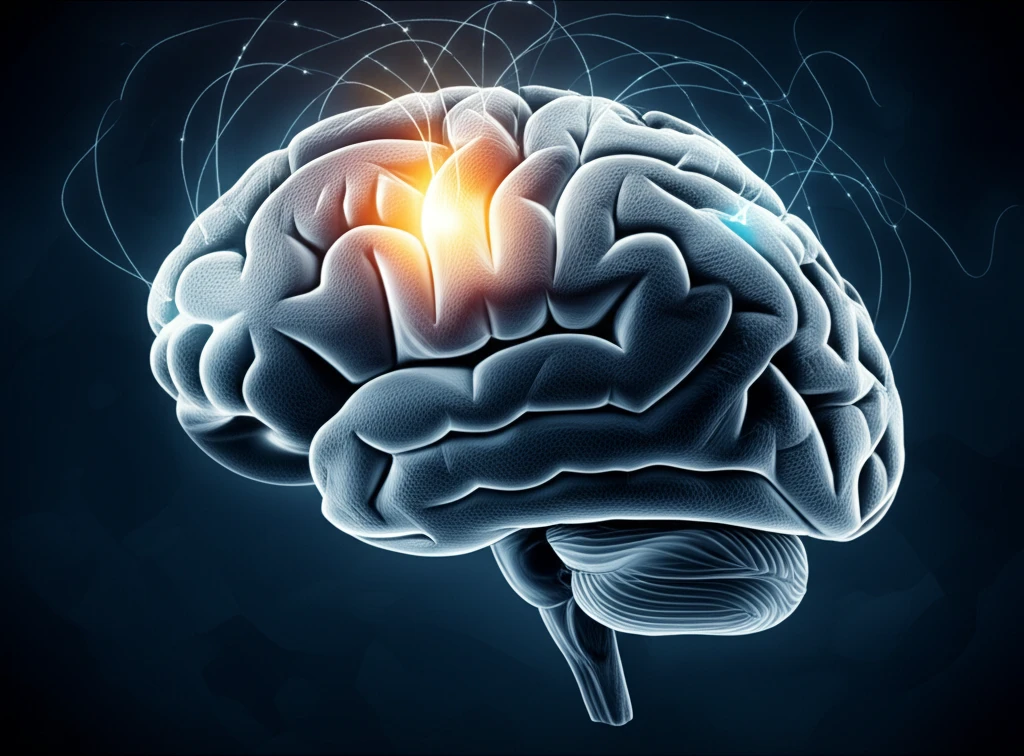
Brain Stimulation Breakthrough: Can High-Frequency Pulses Rewrite Movement Disorder Treatment?
"New research unveils how high-frequency brain stimulation affects neural activity in Parkinson's and dystonia, paving the way for more targeted therapies and a deeper understanding of movement disorders."
Deep brain stimulation (DBS) has revolutionized the treatment of movement disorders like Parkinson's disease and dystonia, offering relief to countless individuals. However, the precise mechanisms by which DBS works remain a complex puzzle. While it's known that DBS involves delivering high-frequency electrical pulses to specific brain regions, how these pulses alter neural activity and alleviate symptoms has been a topic of ongoing debate.
One prominent theory suggests that DBS works by inhibiting the overactive neurons in the targeted brain region. For example, in Parkinson's disease, the globus pallidus interna (GPi) often exhibits excessive activity. According to this theory, DBS would dampen this activity, restoring a more balanced neural state. However, recent research is uncovering a more nuanced picture, revealing that DBS can also excite neurons and trigger a cascade of complex after-effects that contribute to its therapeutic benefits.
This article dives into a groundbreaking study that sheds new light on how high-frequency stimulation (HFS) impacts the GPi. By combining human studies with rodent models, researchers have identified a fascinating phenomenon: HFS can induce both inhibitory and excitatory after-effects in GPi neurons, and the balance between these effects may be crucial for effective treatment of movement disorders. Get ready to explore how these findings could reshape the future of DBS therapy.
Decoding High-Frequency Stimulation: How Does it Affect the Brain?

The research team explored the effects of high-frequency microstimulation on the GPi in patients with Parkinson's disease and dystonia. They discovered that HFS could lead to three distinct responses in GPi neurons: facilitation (increased firing rate), suppression (decreased firing rate), or no change. Surprisingly, a substantial proportion of neurons exhibited facilitation, suggesting that HFS doesn't simply inhibit neural activity as previously thought.
- Excitation alone: Neurons showed an immediate increase in firing rate that persisted throughout the recording period.
- Excitation with late inhibition: Neurons initially increased their firing rate, but this was followed by a period of reduced activity before firing rates increased again.
The Future of DBS: Tailoring Stimulation for Optimal Results
This research marks a significant step forward in our understanding of how DBS works and highlights the importance of considering both excitatory and inhibitory effects when designing stimulation protocols. By carefully tailoring stimulation parameters, such as frequency and charge density, it may be possible to optimize DBS therapy for individual patients, maximizing its benefits and minimizing side effects. As we continue to unravel the complexities of brain stimulation, we move closer to a future where movement disorders can be treated with ever-increasing precision and effectiveness.
